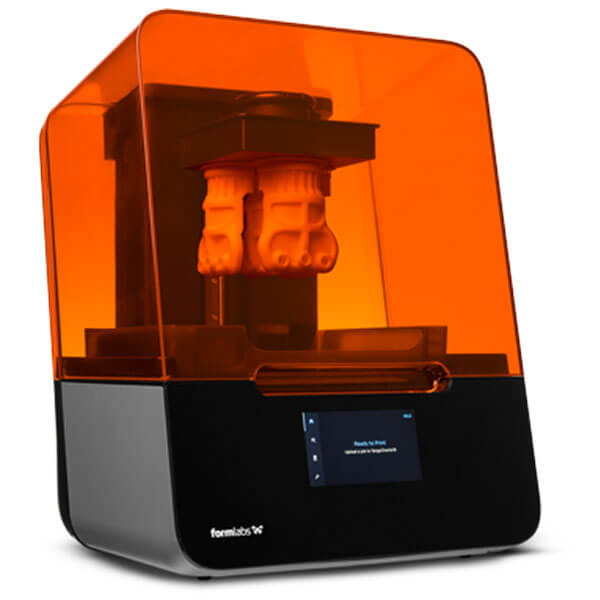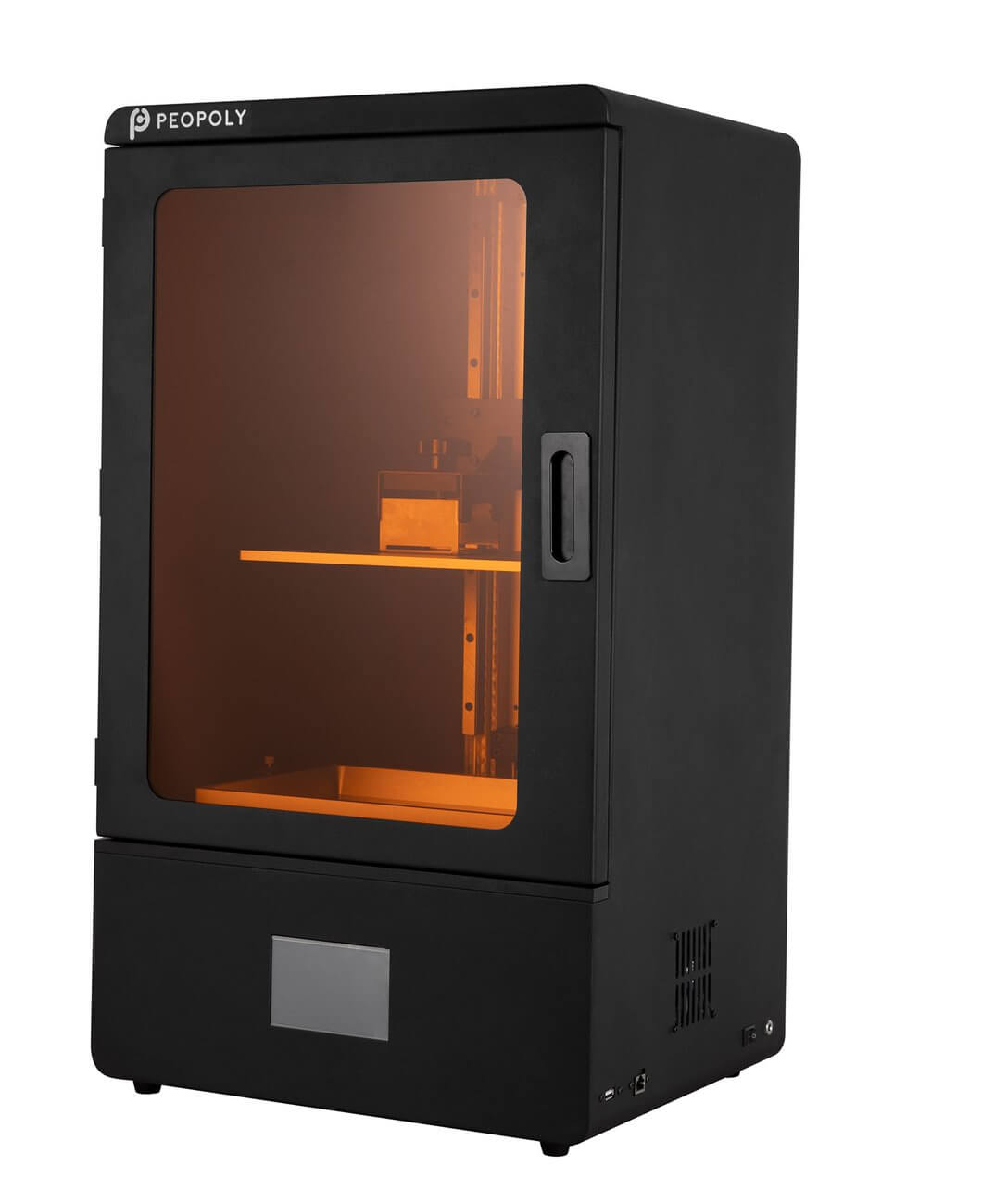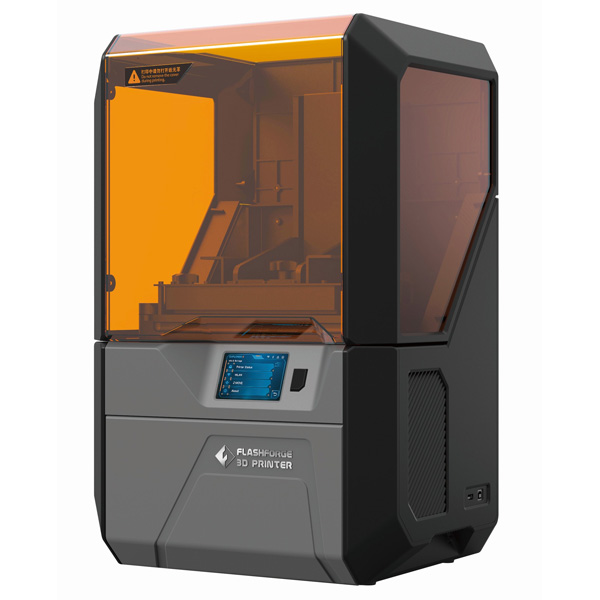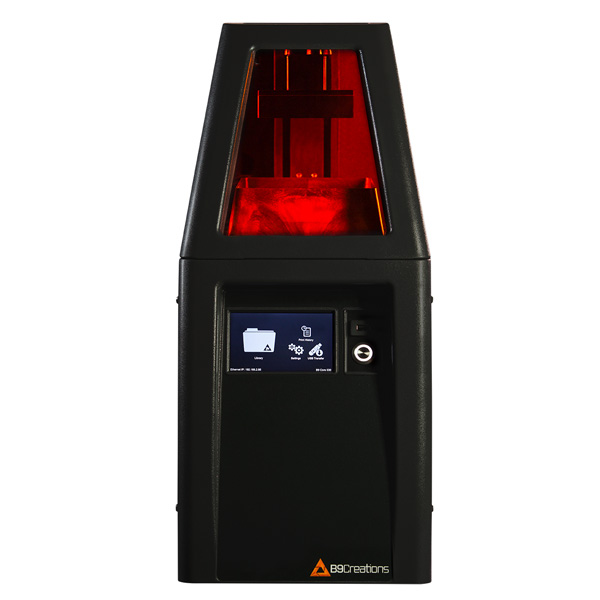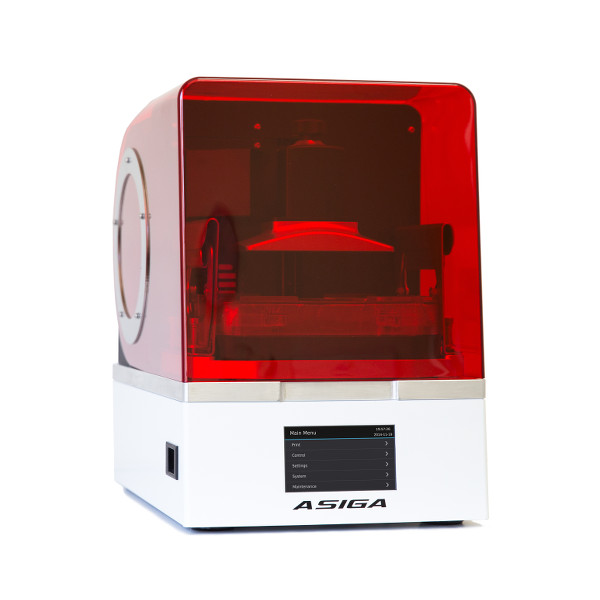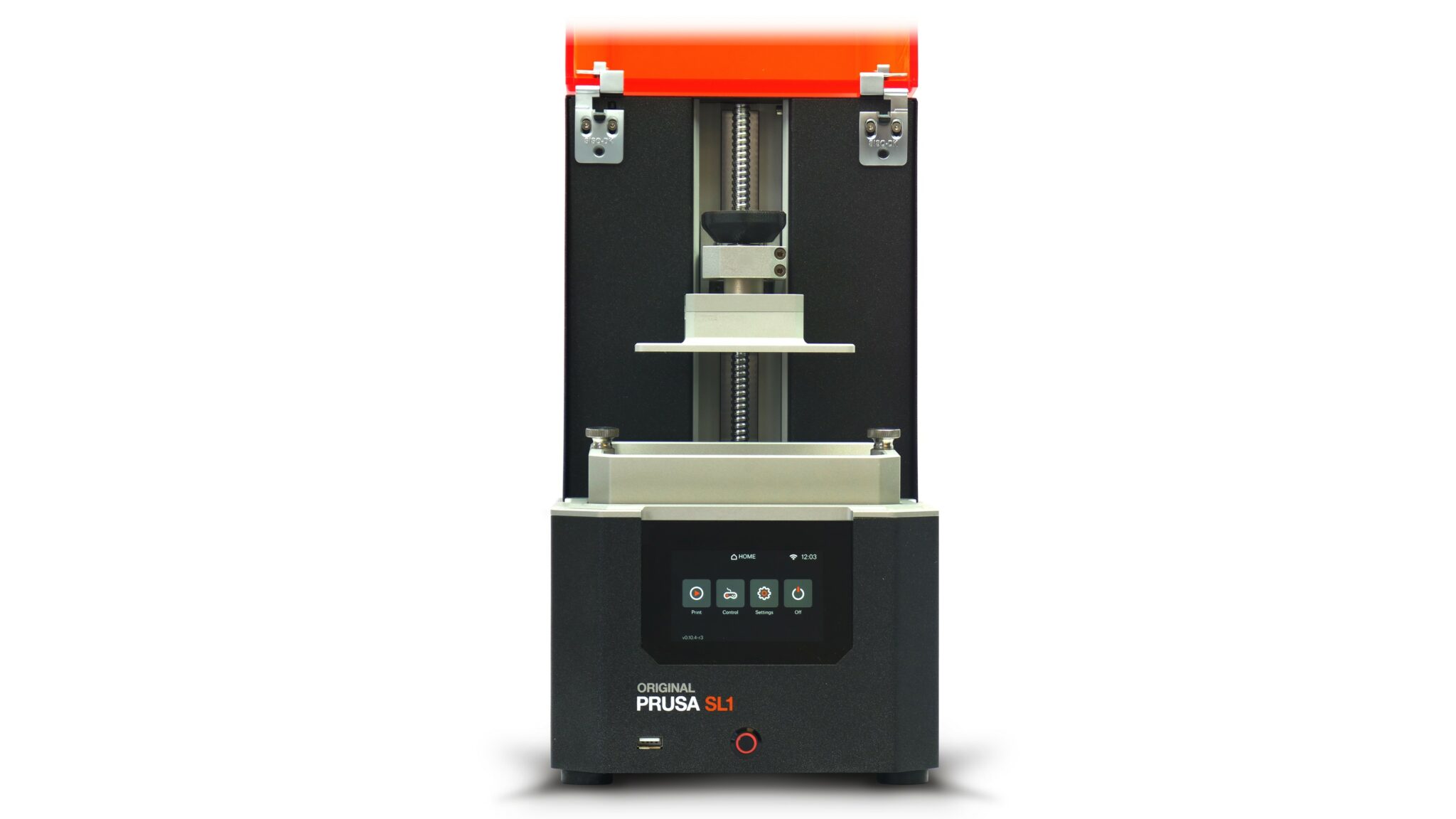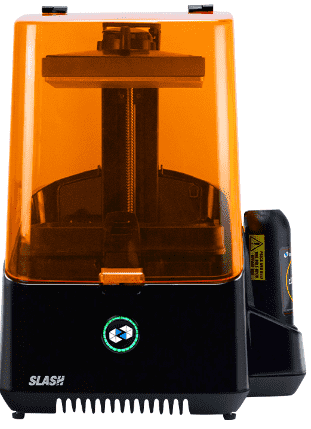Best resin 3D printers in 2024 – SLA, DLP, LCD

What is the best resin 3D printer on the market?
Resin 3D printers are able to offer a very high level of detail and smooth surfaces. They are most commonly seen in dental labs and clinics as well as in jewelry workshops but are also increasingly popular with hobbyists and makers.
The way a resin 3D printer works depends on its technology: laser SLA (stereolithography), DLP (Digital Light Processing), or LCD-based (using an LCD screen to mask projected light).
All resin 3D printers involve the same workflows, however, requiring several post-processing steps such as resin removal and post-curing.
In this guide, we take a look at some of the best resin 3D printers available in each category (SLA, DLP, and LCD) and provide you with key concepts linked to resin 3D printing.
The best resin 3D printers (SLA/DLP/LCD)
| Brand | Product | Build size | Country | Price
Approximate starting prices based on supplier-provided information and public data. Prices may vary by region, over time and do not include additional products or services (taxes, shipping, accessories, training, installation, …).
| |
|---|---|---|---|---|---|
| Prusa Research | Original Prusa SL1 | 120 × 68 × 150 mm | Czech Republic | $ 1,699 | Quote |
| Peopoly
Product data validated by the manufacturer.
| Phenom | 276 × 155 × 400 mm | China | $ 1,999 | Quote |
| Formlabs | Form 3 | 146 × 145 × 185 mm | United States | $ 3,499 | Quote |
| UNIZ | SLASH 2 | 190 × 120 × 200 mm | – | $ 3,500 | Quote |
| FlashForge
Product data validated by the manufacturer.
| Hunter DLP | 120 × 67 × 150 mm | China | $ 3,999 | Quote |
| DWS | XFAB | 180 × 180 × 180 mm | – | $ 6,600 | Quote |
| B9Creations
Product data validated by the manufacturer.
| B9 Core 550 | 96 × 54 × 127 mm | – | $ 9,955 | Quote |
| Asiga | MAX | 119 × 67 × 75 mm | Australia | $ 10,990 | Quote |
| ETEC | Envision One | 180 × 101 × 175 mm | Germany | upon request | Quote |
The products in the table are ranked by price (low to high).

| Brand | Product | Technology | Build size | Country | Price
Approximate starting prices based on supplier-provided information and public data. Prices may vary by region, over time and do not include additional products or services (taxes, shipping, accessories, training, installation, …).
| |
|---|---|---|---|---|---|---|
| Prusa Research | Original Prusa SL1 | mSLA | 120 × 68 × 150 mm | Czech Republic | $ 1,699 | Get a quote |
| Peopoly
Product data validated by the manufacturer.
| Phenom | mSLA | 276 × 155 × 400 mm | China | $ 1,999 | Get a quote |
| Formlabs | Form 3 | SLA | 146 × 145 × 185 mm | United States | $ 3,499 | Get a quote |
| UNIZ | SLASH 2 | mSLA | 190 × 120 × 200 mm | – | $ 3,500 | Get a quote |
| FlashForge
Product data validated by the manufacturer.
| Hunter DLP | DLP | 120 × 67 × 150 mm | China | $ 3,999 | Get a quote |
| DWS | XFAB | SLA | 180 × 180 × 180 mm | – | $ 6,600 | Get a quote |
| B9Creations
Product data validated by the manufacturer.
| B9 Core 550 | DLP | 96 × 54 × 127 mm | – | $ 9,955 | Get a quote |
| Asiga | MAX | DLP | 119 × 67 × 75 mm | Australia | $ 10,990 | Get a quote |
| ETEC | Envision One | CDLM | 180 × 101 × 175 mm | Germany | upon request | Get a quote |
Overview of the best resin 3D printers (SLA/DLP/LCD)
This overview is divided into three sections according to the resin 3D printers’ technology (SLA, DLP, or LCD).
The best SLA 3D printers (laser stereolithography)
Formlabs has been one of the main players on the professional resin 3D printer market for years. The Form 3, evolution of the award-winning Form 1 and Form 2, is their latest model, along with the Form 3L (large volume). This professional liquid resin printer boasts an array of practical features that make it a great choice for many businesses.
In the past, users have praised Formlabs’ hardware quality and precision, while criticizing the company’s decision to limit compatible materials to expensive Formlabs proprietary resins only. Today, the Form 3 features an “Open mode” that allows the use of generic materials.
The Phenom is an affordable and large-format LCD (MSLA) 3D printer that is suitable for hobbyists and professionals alike. An advantage of this resin 3D printer is large-format. The Peopoly Phenom 3D printer also exists in larger versions: Phenom L, Phenom Noir, Phenom XXL.
DWS Systems is specialized in manufacturing professional and industrial-grade resin 3D printers. The XFAB stereolithography 3D printer is their most affordable option, but is capable of delivering high-quality results. One of this SLA 3D printer’s most interesting characteristics is its cartridge resin system.
This makes material handling much easier and cleaner than with non-cartridge systems.
The best DLP 3D printers (Digital Light Processing)
This professional resin 3D printer boasts a number of user-friendly features including a touchscreen, automatic calibration, and Wi-Fi connectivity. FlashForge develops its own resins, but users may also use third-party materials.
With its special jewelry support mode, the Hunter DLP mainly targets jewelers.
B9Creations’ Core series of 3D printers all provide fine levels of detail for professionals. According to the manufacturer, the B9 Core 550 resin 3D printer offers faster printing speeds (100+ mm/hour) than most DLP 3D printers in the same price range.
This digital light processing 3D printer is available with a smaller build volume (B9 Core 530).
ETEC Envision One overview
The Envision One is a 3D printer produced by ETEC, a manufacturer based in Germany.
It uses the Continuous Digital Light Manufacturing technology to produce thermosets parts using resin feedstock.
It offers a build volume of 180 × 101 × 175 mm.
The Asiga MAX is equipped with a resin level sensor, automatic calibration function and touch screen. Asiga also provides free lifetime technical support.
This 3D printer is particularly suitable for the medical and dental sectors, being compatible with silicone resins.
The best LCD 3D printers (liquid crystal display)
For many years, Prusa Research has been famous for manufacturing reliable 3D printers. The Original Prusa SL1 is Josef Prusa’s first resin 3D printer, but there is no doubt that it has been endowed with as much quality as the award-winning Prusa MK3 FDM 3D printers.
This LCD 3D printer– which is also available as a DIY kit– is packed with features such as a tilted print bed, auto calibration, vapor extraction, and more.
UNIZ SLASH 2 overview
The SLASH 2 is a 3D printer produced by UNIZ, a manufacturer based in China.
It uses the LCD technology to produce thermosets parts using resin feedstock.
It offers a build volume of 190 × 120 × 200 mm.
Resin 3D printers under $1,000
As LCD screens are very affordable, they have been the key to bringing resin 3D printing to the masses. Indeed, more and more manufacturers are launching affordable desktop resin 3D printers with LCD 3D printing technology, and the price drop is radical.
These affordable resin 3D printers obviously can’t be expected to provide the same level of detail and accuracy as the professional 3D printers listed above. However, they are great as an introduction to resin 3D printing and they do produce good quality prints.
Read our full-length budget resin 3D printer article for a list of affordable machines (starting from $149).
You may also like:
Cheap resin 3D printer: 9 best options in 2024
Post-processing for resin 3D prints: necessary steps
Resin removal
Since the objects are printed within a tank of resin, resin drips off of the objects as they are lifted up and out of the tank. There’s always a layer of uncured resin left on the object, and it must be removed with IPA (isopropyl alcohol).
This can be done manually by dipping the part in an IPA bath and gently scrubbing the part with a soft brush, but it is quite time-consuming.
For users that produce resin parts on a regular basis, there are machines called resin washers, or resin cleaners. Ackuretta, for example, markets Cleani, a dual-tank resin cleaner that can wash both the parts and the printer’s platform (yes, that needs to be washed, too.).
Post-curing
When removing a resin 3D printed part from the build plate, it is still soft and slightly malleable. To reach its final physical state the part must go through a post-curing step. This means exposing the object to heat or light. Various SLA post-curing techniques exist:
UV curing chamber / UV cure box
Professional users will definitely want to use a dedicated UV curing chamber for their parts in order to get the most out of the material (strength, for example). Most resin 3D printer manufacturers have UV curing chambers available separately.
UV nail lamp
For small parts, nail UV lamps can do the trick. There are dozens of nail UV lamps available for less than $50.
DIY UV curing chamber
Crafty people also have the possibility to make their own UV curing station!
How do resin 3D printers work and what are the differences between LCD, DLP, and SLA 3D printing?
SLA 3D printers, LCD 3D printers, and DLP 3D printers all use liquid resin as a 3D printing material. The resin, a photopolymer, becomes solid when cured (activated) by a specific light source.
That light source cures the liquid resin, which is stored in a tank or vat, to form the object layer after layer.
The resin solidification process (photopolymerization) is at the core of three main 3D printing technologies:
- Laser-based Stereolithography (SLA): a UV laser cures the resin in the tank to form the object point by point.
- Digital Light Processing (DLP): the resin is cured by a light projector one whole layer at a time. The light shines in a specific shape depending on the layer.
- Liquid Crystal Display (LCD) or Masked SLA (MSLA): An array of LED lights shine through an LCD screen. The LCD screen acts as a mask or stencil between the LED and the bottom of the resin tank, only letting light through in specific shapes.
All of these resin-based 3D printing technologies form part of the same family: stereolithography. That’s why some manufacturers include “SLA” in the name of their 3D printers, while they actually use DLP or LCD-based technology.
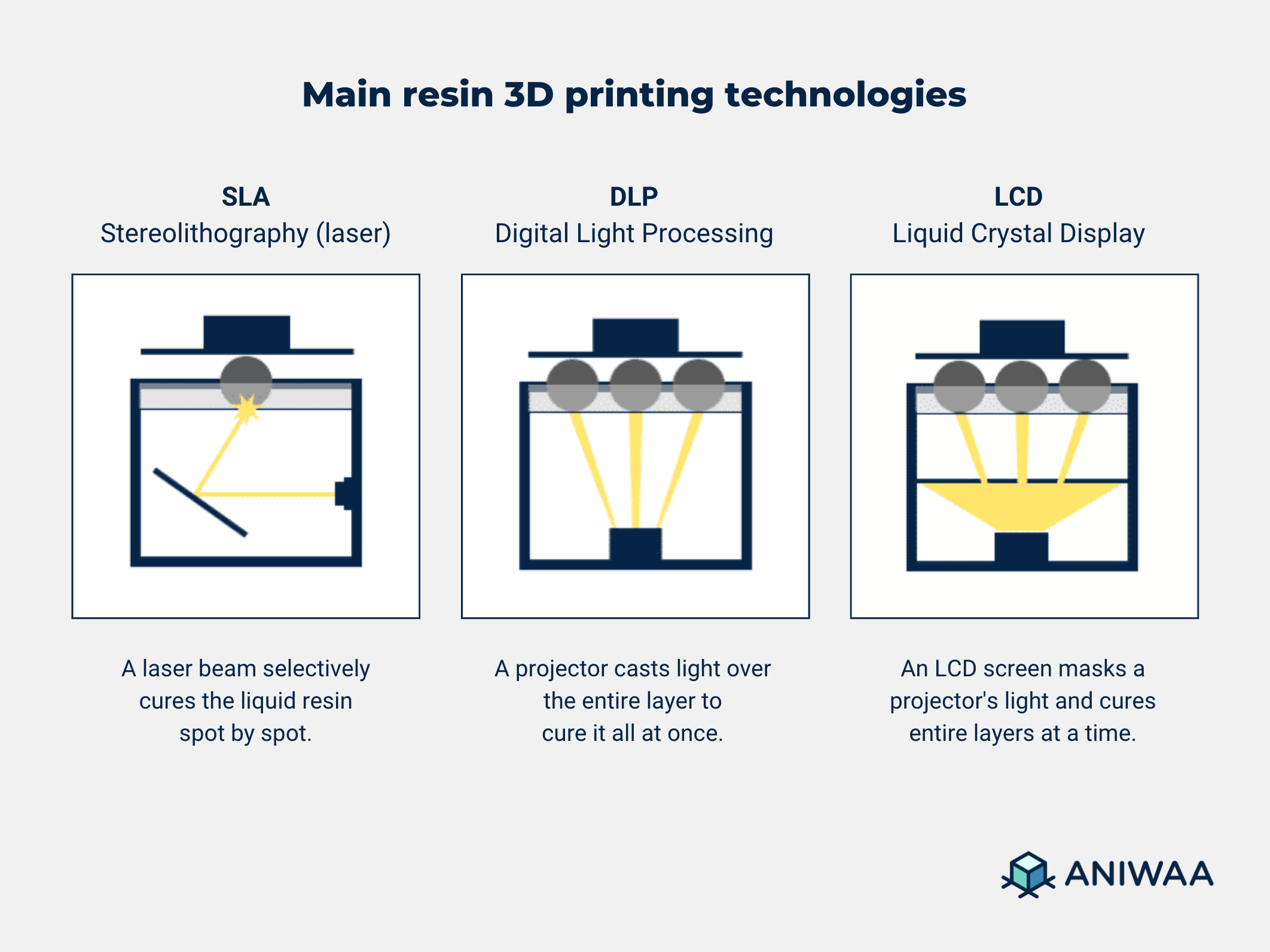
Laser-based SLA 3D printing technology
An SLA 3D printer cures the liquid resin spot by spot with a laser, so it is potentially more precise than DLP 3D printing.
Contrary to DLP 3D printing, the build volume is completely independent of the resolution of the 3D print. A 3D print with a laser stereolithography 3D printer can be of any size and resolution.
DLP 3D printing technology (digital light processing)
DLP 3D printers use a light projector. The layer’s shape is defined by reflecting or deflecting light with mirrors. With DLP, the 3D printer is able to cure a whole layer of resin at once. Therefore, a DLP 3D printer can potentially 3D print faster than an SLA 3D printer, as an entire layer is exposed all at once instead of one spot at a time with a laser.
However, a DLP 3D printer’s resolution depends on its projector and how many pixels/voxels are available (a full HD projector usually offers 1080p). A 3D printer with a large build volume has a fixed number of pixels, making it impossible to 3D print small details when building at full scale.
The projector used by the DLP 3D printer is less expensive and easier to change than the laser used by SLA 3D printers.
LCD-based resin 3D printing technology
Most LCD resin 3D printers use an LCD screen as a photomask– like a stencil– above another light source (LED, UV…). This is where LCD resin 3D printing is different than DLP 3D printing, which makes use of mirrors or other complex systems to direct the light into a certain shape. The technology is also called Masked Stereolithography (MSLA).
Since LCD screens are inexpensive, this technology has made resin 3D printing much more affordable than before and there are now dozens of low-cost, budget resin 3D printers available for a couple of hundred dollars.
In some cases, the light emitted by an LCD screen is used to directly cure the daylight-sensitive resin.
What is best between LCD, DLP, and SLA 3D printers?
The answer depends on the user’s needs in precision, speed, and budget. We can highlight that:
- Laser SLA 3D printers are best for 3D printing highly detailed and intricate 3D prints, big or small.
- LCD and DLP 3D printers are best for 3D printing batches of small parts, or quickly 3D printing large parts without too many details.
- LCD-based 3D printers are generally much more affordable than SLA and DLP 3D printers.
Main resin 3D printing applications
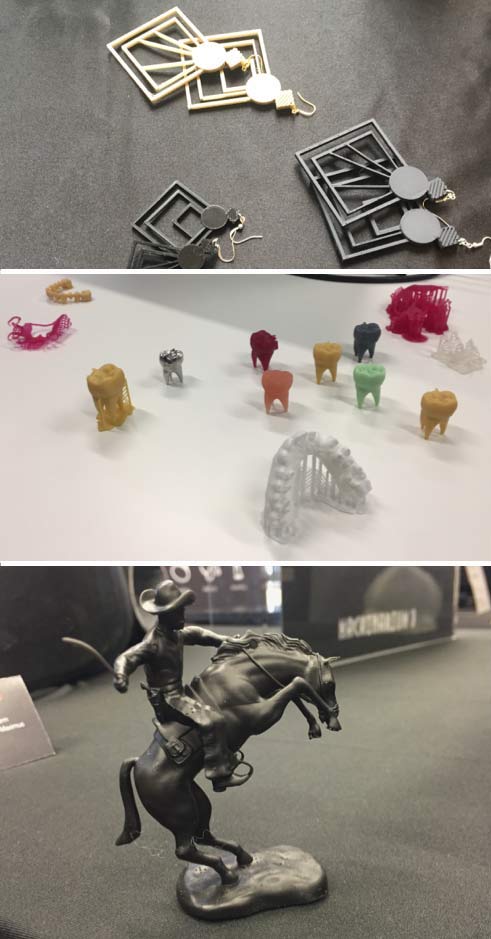
Resin 3D printers mostly target professional users. Indeed, they are suited for specific applications requiring high levels of detail and top-quality finishes. These applications include:
Resin 3D printers for jewelry
Jewelers use high-precision 3D printers to create molds with the lost wax technique and create incredible jewels.
SLA, DLP, and LCD 3D printers in dentistry
Dentists and dental labs are starting to use resin 3D printing to build dental crowns, mouth guards, surgical guides, and much more.
Resin 3D printing in medical and healthcare fields
SLA and DLP 3D printing can be used to create medical appliances such as hearing aids.
Hobbies: resin 3D printer for miniatures
Some tinkerers, DIYers, and cosplayers love 3D printing miniatures and figurines.
Key benefits and limitations of resin 3D printing
Benefits of LCD, DLP, and SLA 3D printing technologies
These are some of the advantages of 3D printing with resin:
- Ability to build small and very detailed parts or objects with fine, complex geometries
- Diversity of 3D printable resin materials (ceramic, metal, biocompatible, flexible, rigid, etc.)
- Smooth finish of the parts produced (no easily visible layers like with FFF 3D printers)
Limits of resin 3D printing
As with any technology, resin 3D printing has its limits:
- Post-processing is mandatory (removing delicate support structures, post-curing, resin removal, etc.) and requires a UV curing chamber for good results
- Requires time-consuming cleaning time (for the vat and for the 3D printed part)
- Very smelly and toxic fumes
- Safety precautions required when handling the material
Resin 3D printer price
Laser SLA resin 3D printer price
SLA 3D printer prices depend on many factors. The price for a basic SLA 3D printer kit like the Peopoly Moai usually starts at about $1,200. Industrial resin 3D printers, on the other hand, can reach several hundred thousand dollars.
DLP resin 3D printer price
The price of a DLP 3D printer generally starts around $2,000 or $3,000. DLP 3D printers with higher precision and more features cost around $10K to $20K. More expensive digital light processing 3D printers also exist.
LCD resin 3D printer price
LCD-based resin 3D printers are the most affordable resin 3D printer type. There are many LCD resin 3D printers available for under $1,000, and even under $300. Higher-quality LCD 3D printers may cost a few thousand dollars.
UV curing chamber price
Most resin 3D printer brands sell UV curing chambers separately, with prices starting around $300 to $500.
FAQ
In 3D printing, SLA stands for stereolithography.
In 3D printing, DLP stands for Digital Light Processing.
LCD stands for Liquid Crystal Display, which is a type of screen used in electronic devices (smartphone, TV, etc.). A growing number of resin 3D printers use an LCD screen’s light to cure light-sensitive resin and form objects in 3D.
SLA resin is a photopolymer material, which is mainly composed of monomers, oligomers, and photoinitiators. Depending on the “recipe”, the stereolithography resin can be plastic, ceramic, or even metal-based.
A resin 3D printer can cost anywhere from $500 to over $250,000. However, there are many resin 3D printers available for under $10,000.
A resin 3D printer (stereolithography) is a machine that solidifies liquid resin layer by layer to form an object in 3D.
There are resin 3D printers for sale on major e-commerce sites like Amazon, AliExpress, GearBest, and Banggood. Online retailers specialized in 3D printing also exist, such as MatterHackers.
 English
English  Français
Français

